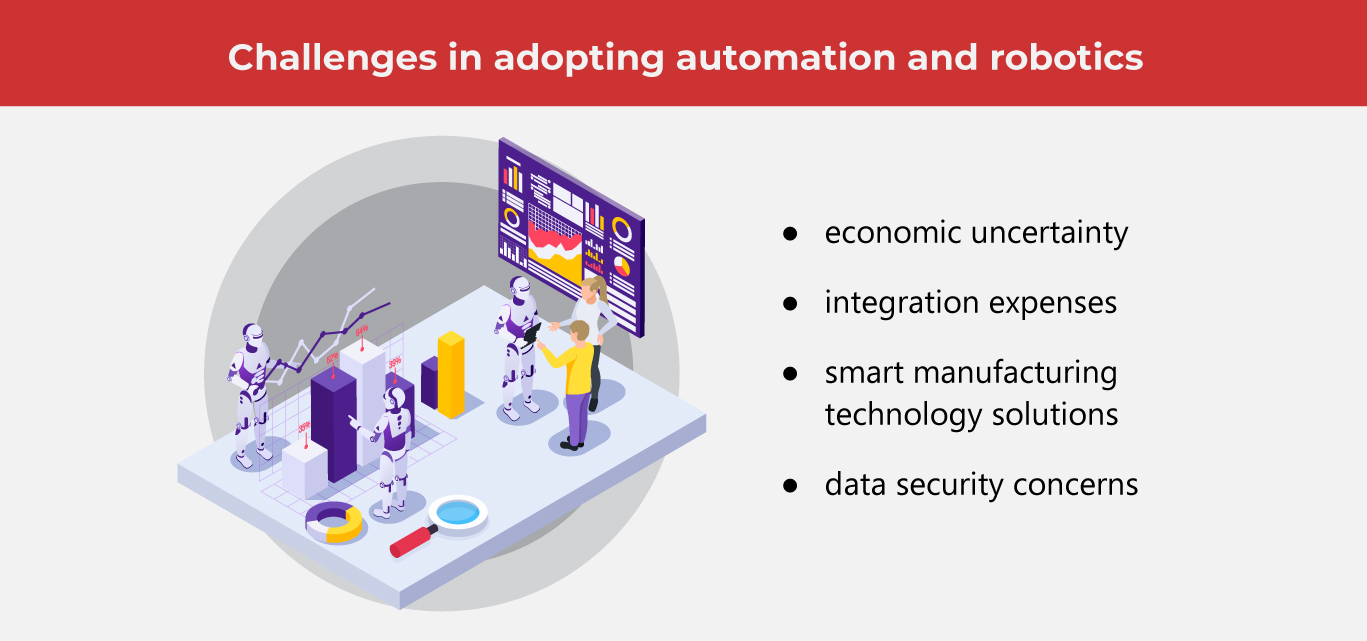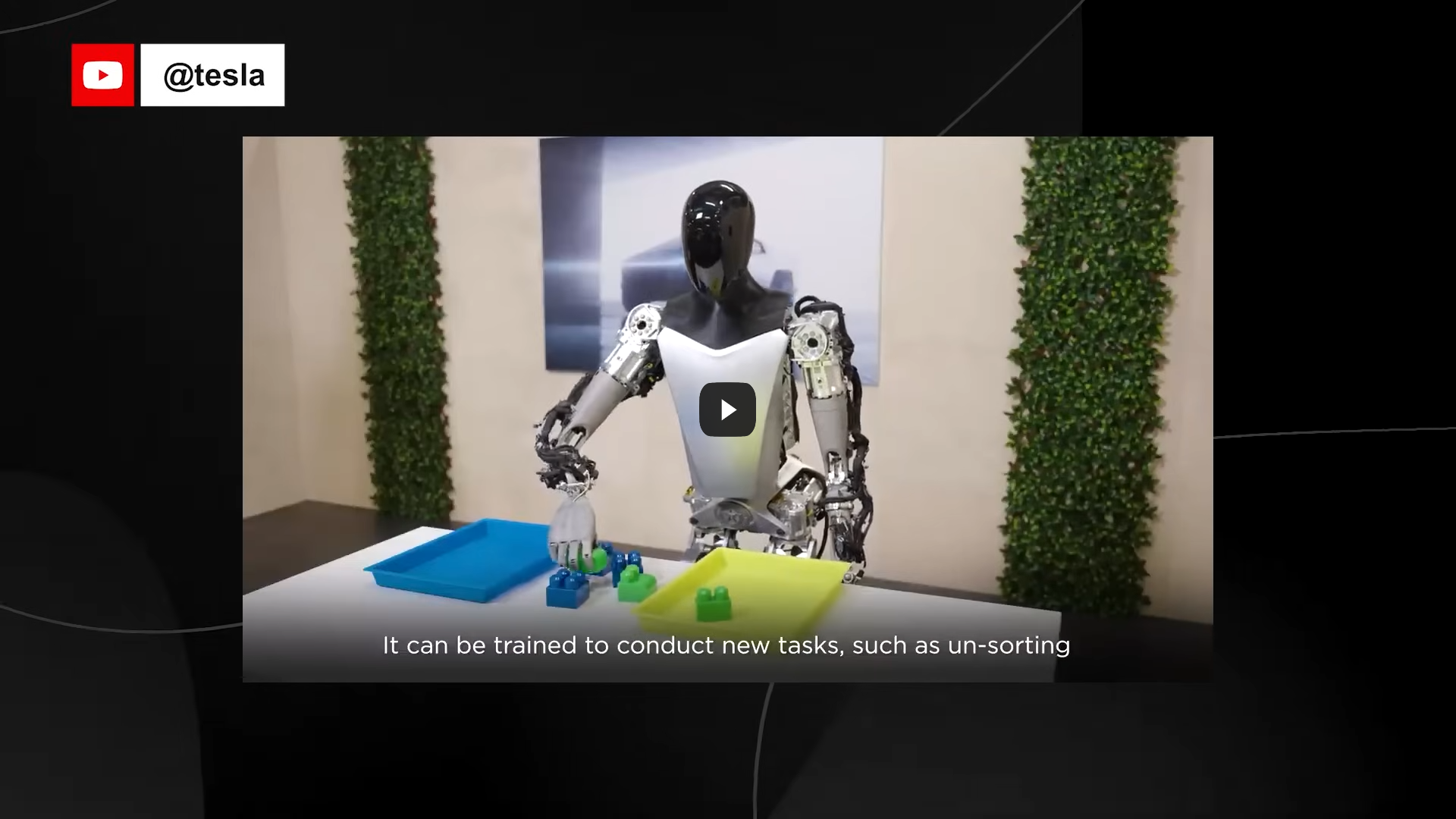Robotics and Automation: A Winning Combo This 2024

Boosting operational efficiency and productivity is a constant goal for global manufacturing. An effective way to achieve this in the digital era is harnessing robotics and automation, which lend speed and accuracy to processes. We take at some of these amazing tech tools' major drivers and challenges.
Since robots entered the workplace in the early 1960s, the functions of these tech creations have been limited to handling components and handling machines. But in today's automation-driven world, robots have grown more sophisticated and can fulfill various aspects of business operations.
Using sensors and other technologies, autonomous mobile robots (AMRs) can move and function independently without direct human influence. Meanwhile, robotic process automation (RPA) uses software robots or bots for routine paperwork and administrative chores. Whatever their capabilities, robots aim to streamline workflows, improve efficiency and accuracy, and give human workers more time to focus on higher-level tasks.
Even with the global economy still in the downturn and automation developing at a neck-breaking speed, businesses are taking measures to maximize the use of robots. Why? The winning combo of automation and robotics allows companies to utilize large amounts of data, implement holistic business measures, and strengthen business resilience.
Trends that drive automation and robotics
Technology and world events are constantly evolving—and each shapes the other. The COVID-19 pandemic, international conflicts, and other developments have significantly affected the use of technology. But what trends cement the need for automation and robotics in this day and age? Read our list to find out.
- Insufficient workforce
According to the World Economic Forum, US retail and wholesale businesses in the consumer goods industry had 70% unfilled roles, of which 55% were manufacturing-related. Employee retention was also an issue, as a global survey revealed that one in five workers stated they planned to change employers within the next year.
Industrial manufacturing and engineering have keenly felt the labor shortage because the younger workforce doesn't see them as attractive job options, even in developed economies. Compounding the problem is the tight competition for talents. Aside from traditional tasks such as welding, manufacturing now requires diverse digital skills, which are also in high demand among other industries.
The labor pool will diminish as the old-generation employees retire, with no one replacing them. While incentivizing manufacturing roles may entice today's job seekers, automation is also a viable solution. Because the labor shortage will likely persist in the coming years, experts urge manufacturers to create highly collaborative environments with cobots, robots and other automation elements in place.
- Reshoring and nearshoring
Geopolitical conflicts, supply chain challenges, and the pandemic have forced companies to pivot their strategies, with some conducting reshoring and nearshoring. A survey conducted by consulting firm Korn Ferry among US and Europe companies showed that 74% aim to reshore or near shore. This move brings manufacturing closer to home, reducing transport costs while boosting local employment. Legislation, including the US CHIPS and the European Chips Acts, have also incentivized and mandated reshoring manufacturing, further strengthening this trend.
- The rise of AI
Artificial intelligence (AI) enables robots to complete elaborate tasks more efficiently because of better environmental perception and communication with human workers. With AI, robots accomplish more than repetitive work; now, they can handle highly variable products. For instance, machine learning equips robots with a sense-and-respond capability, allowing them to adapt to frequent changes in products and packaging.
AI has also taken on new forms, including large language models (LLMs) designed to comprehend and churn out human-like language by learning its complex patterns and nuances. By adopting natural-sounding language, non-tech users can instruct robots to perform tasks.
AI-powered robots can safely navigate busy environments through sensing technologies and machine learning that evaluates images. Robots can better load, unload and assemble components through digital input, improving overall work safety, output and productivity.
- Recognizing the human factor
While Industry 4.0 focuses on automated processes that boost quality and reduce costs, the EU is pushing for Industry 5.0 to emphasize the people's vital role in manufacturing. This is to counter the risk of human employees having less autonomy over their tasks. Some experts suggest adopting a collaborative environment that combines automation sensibilities with human capabilities, such as flexibility, creativity, and resourcefulness. For example, automation can handle repetitive work, even data processing. Meanwhile, people can oversee the automation and address other long-term workplace issues.
- Sustainability
Automation has become a driver of sustainability by utilizing less energy while reducing waste and pollution. With doable environmental, social, and governance initiatives, companies achieve sustainability faster and easier. A way to do this is to tweak existing equipment and processes to make them eco-friendlier. Still, the manufacturing segment needs to position itself as an agent of a circular economy by extending the lives of its robots through refurbishment and repurposing.

How robotics and automation can thrive in manufacturing
Robotics and automation enable business growth and continuity. Manufacturers should always welcome constant change to make the most of these technologies. Here are some ways to leverage these tools:
- Focus on R&D
The tech landscape is constantly evolving, so businesses should always look for new ways to leverage AI and other innovative manufacturing trends. Research and product development practices allow companies to test solutions in a controlled environment, minimizing risk and bringing a sharper focus on targeted results. Digital twinning and other types of virtual simulations also lower costs and risks.
- Facility improvements
Data is becoming increasingly integral in automation, supporting manufacturing systems and digital processes. Hardware and software should be customized for speed and capacity to accommodate massive data volumes. Digital twins are one such development that needs swift data transfers to keep the physical and virtual elements simultaneously functioning.
- Skills development
Because employee shortages will likely continue, companies should create attractive employment packages or try upskilling their workers. These skills should include conventional duties like welding as well as digital tasks. Online resources are plentiful, and employers will do well to take advantage of them.
- Boosting cybersecurity
Using modern technologies should go hand in hand with boosted security. Using the cloud especially requires a security team to keep cyberattacks at bay with strong layers of security. Once there's a breach, expect financial and data losses, reputation damage, and disruption in operations.
Robotics and automation have become necessities in company resilience, helping businesses respond to changes as they happen. What were once distant goals are now business essentials in promoting innovation and creativity while maximizing investment.
As one of the Top 20 EMS companies in the world, IMI has over 40 years of experience in providing electronics manufacturing and technology solutions.
We are ready to support your business on a global scale.
Our proven technical expertise, worldwide reach, and vast experience in high-growth and emerging markets make us the ideal global manufacturing solutions partner.
Let's work together to build our future today.
Other Blog




